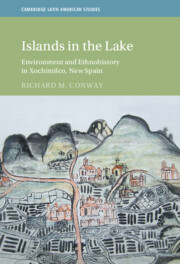Book contents
- Islands in the Lake
- Cambridge Latin American Studies
- Islands in the Lake
- Copyright page
- Dedication
- Contents
- Illustrations
- Preface
- Acknowledgments
- Introduction
- 1 Ecological and Political Landscapes
- 2 Land
- 3 Canoes and Commerce
- 4 Demography and Society
- 5 Crisis in the Seventeenth Century
- 6 Late Colonial Watersheds
- 7 Nahuatl Sources from Xochimilco
- Conclusion
- Glossary
- Bibliography
- Index
- Other Books in the Series (continued from page ii)
6 - Late Colonial Watersheds
Published online by Cambridge University Press: 01 October 2021
- Islands in the Lake
- Cambridge Latin American Studies
- Islands in the Lake
- Copyright page
- Dedication
- Contents
- Illustrations
- Preface
- Acknowledgments
- Introduction
- 1 Ecological and Political Landscapes
- 2 Land
- 3 Canoes and Commerce
- 4 Demography and Society
- 5 Crisis in the Seventeenth Century
- 6 Late Colonial Watersheds
- 7 Nahuatl Sources from Xochimilco
- Conclusion
- Glossary
- Bibliography
- Index
- Other Books in the Series (continued from page ii)
Summary
The sixth chapter examines how Native communities and haciendas adopted livestock rearing and, in particular, cattle ranching as a new economic activity within the lakes. Responding to the rise of the urban market for meat as well as the demographic decline within Native communities, residents of the chinampa districts expanded into the waters of the lakes in new and destabilizing ways. Alongside the chinampas, many of which survived and retained their value, haciendas and Native communities now fashioned pastures from the swamps. As they pushed further into the lake, pastoralists instituted new environmental management practices and constructed new hydraulic engineering works of their own. At the same time, the colonial administration, responding to renewed fears of flooding in the capital, increasingly intervened in the southern lakes’ hydrology. These new forces for change, when combined with higher rates of rainfall because of renewed climate extremes, undermined both the ecological autonomy and the flood defenses of the Nahua communities, portending of wholesale environmental transformation if not ruination on the eve of Mexico’s Independence.
Keywords
- Type
- Chapter
- Information
- Islands in the LakeEnvironment and Ethnohistory in Xochimilco, New Spain, pp. 273 - 309Publisher: Cambridge University PressPrint publication year: 2021

